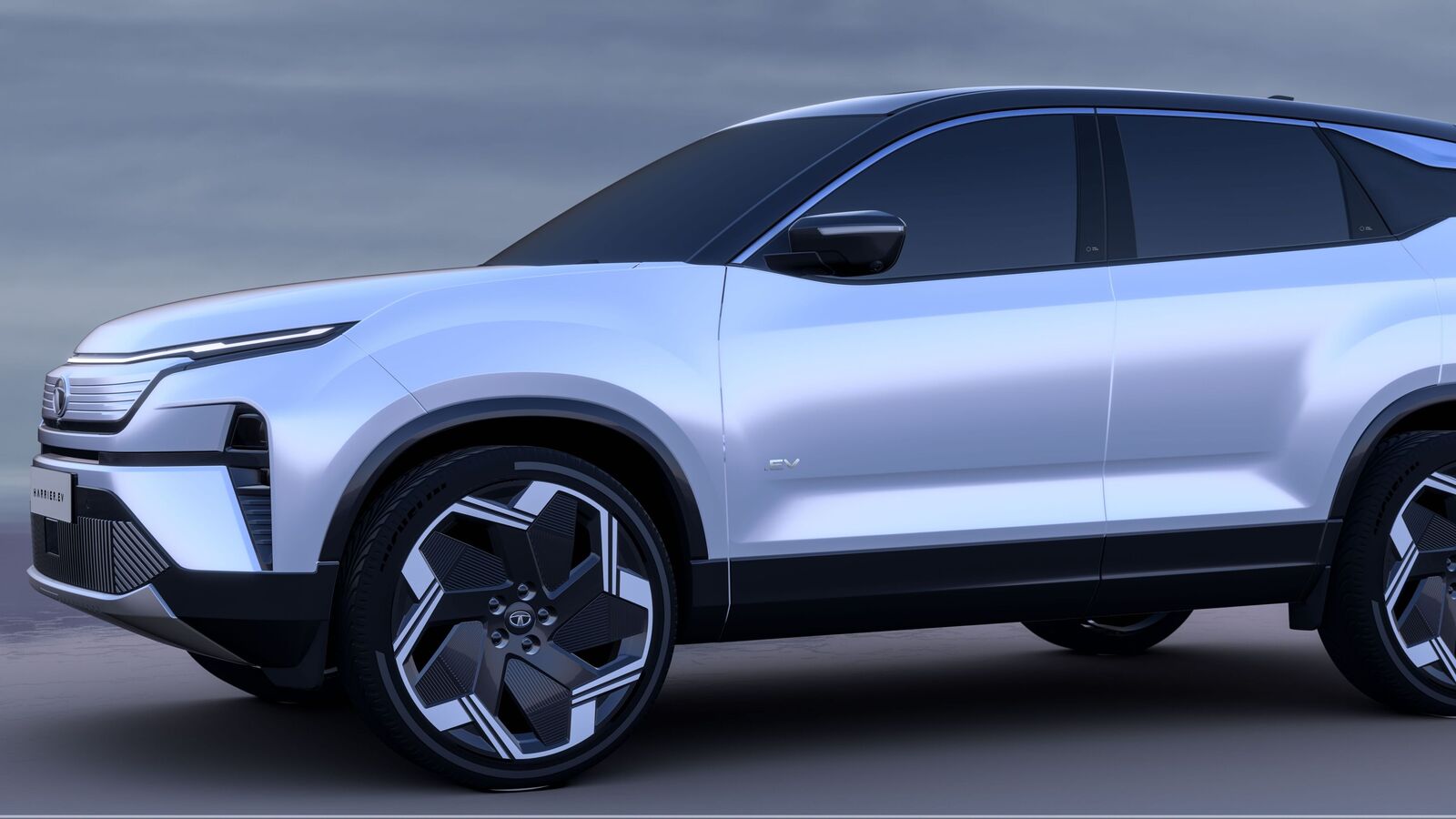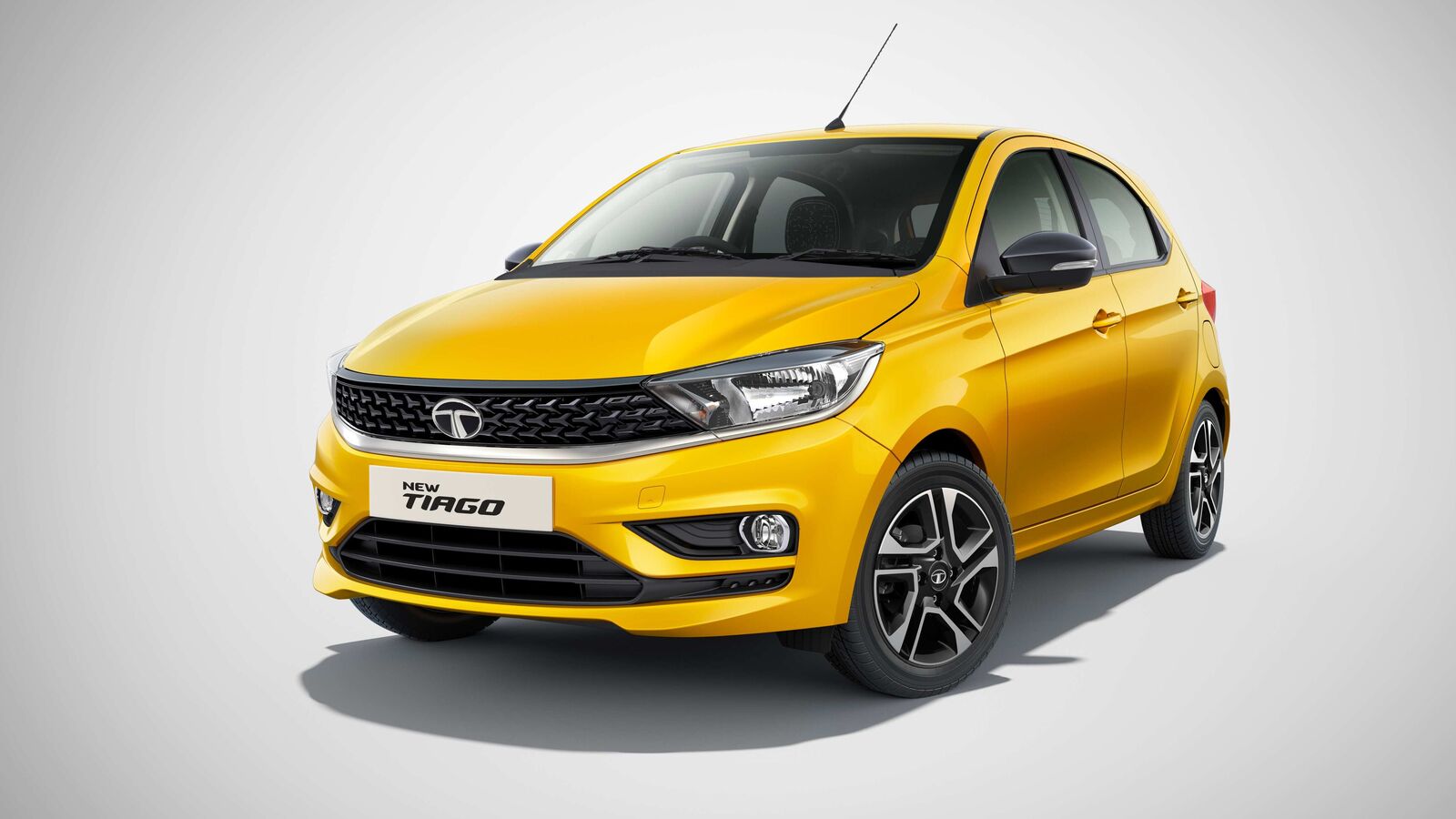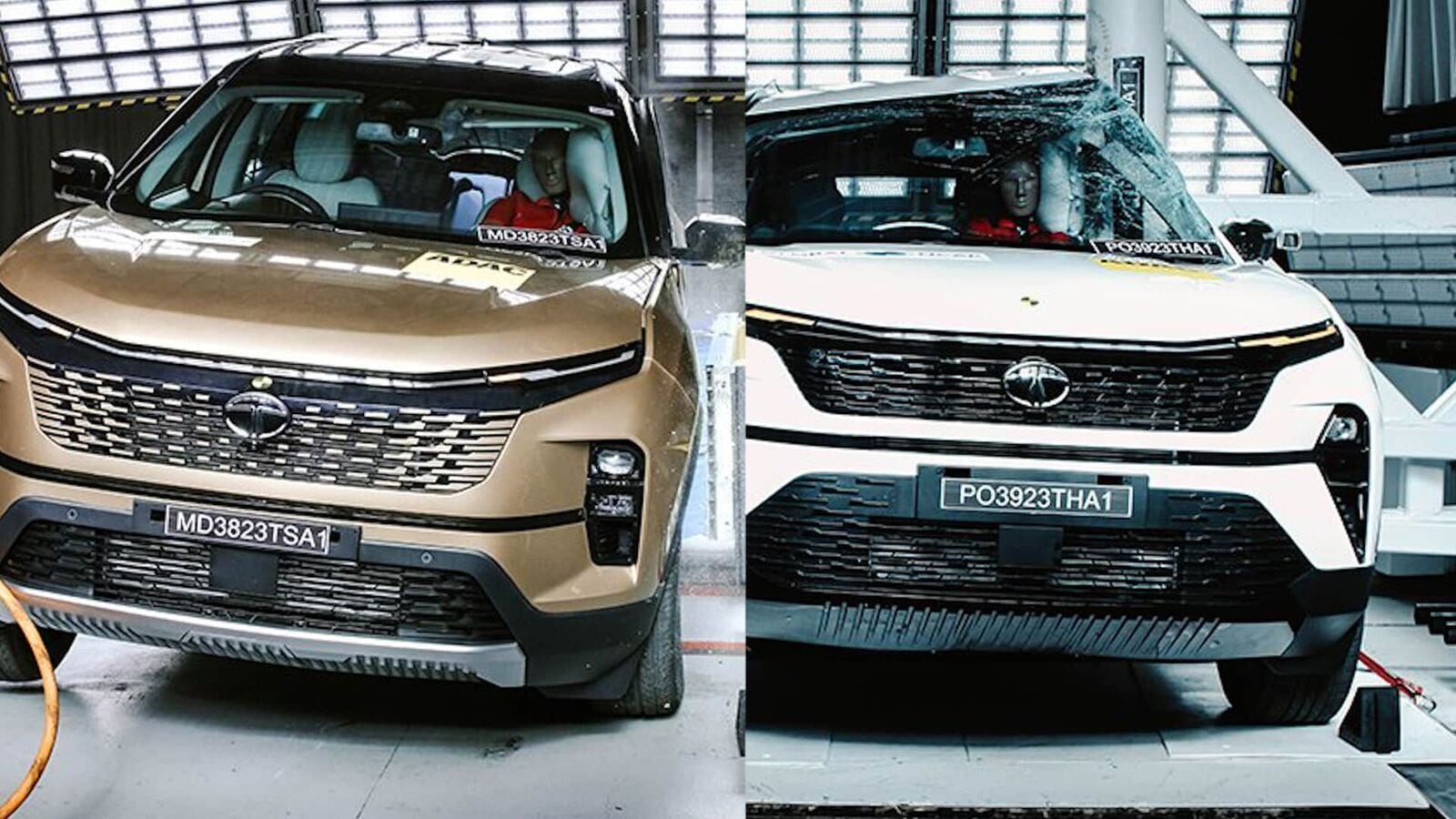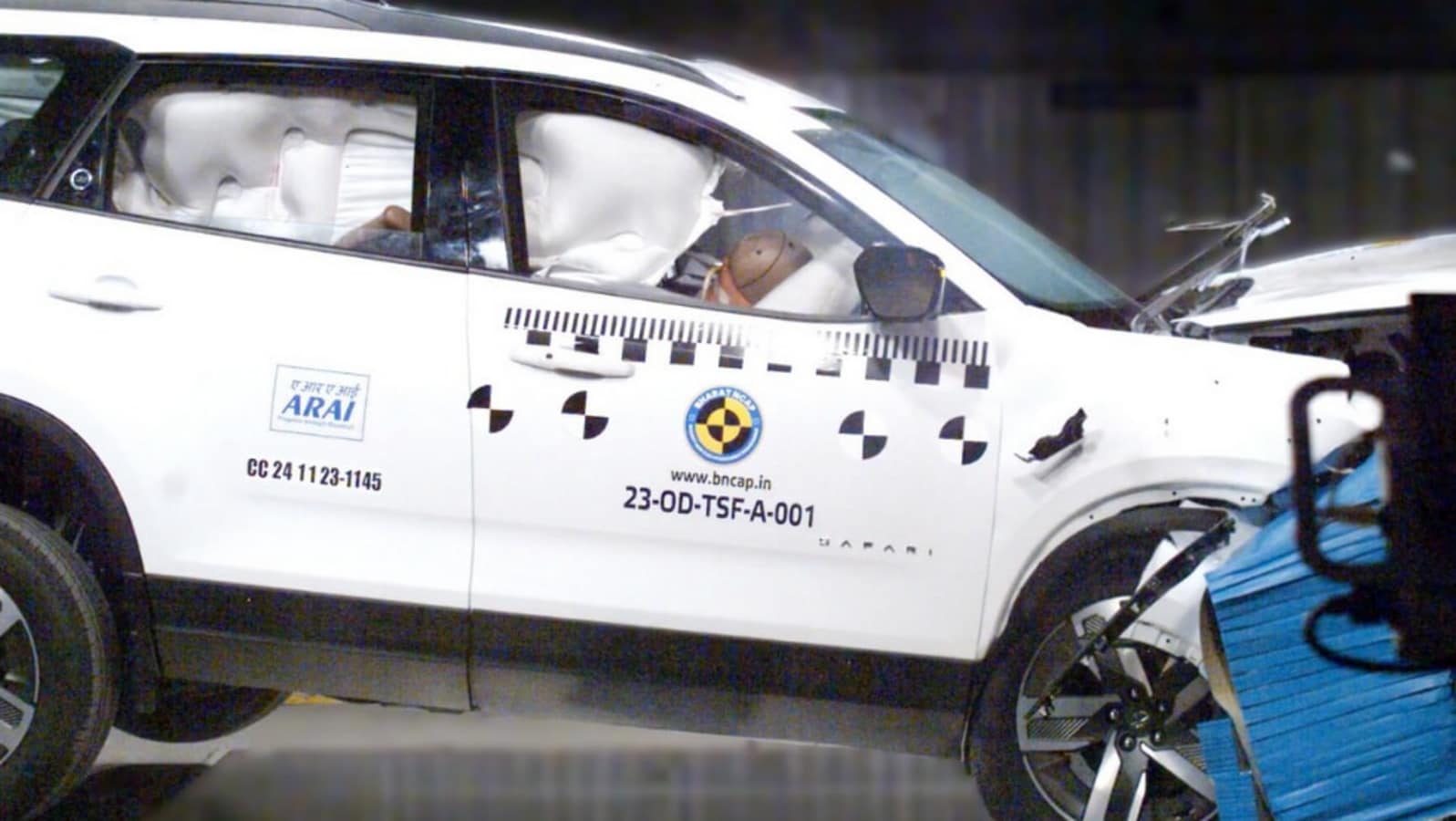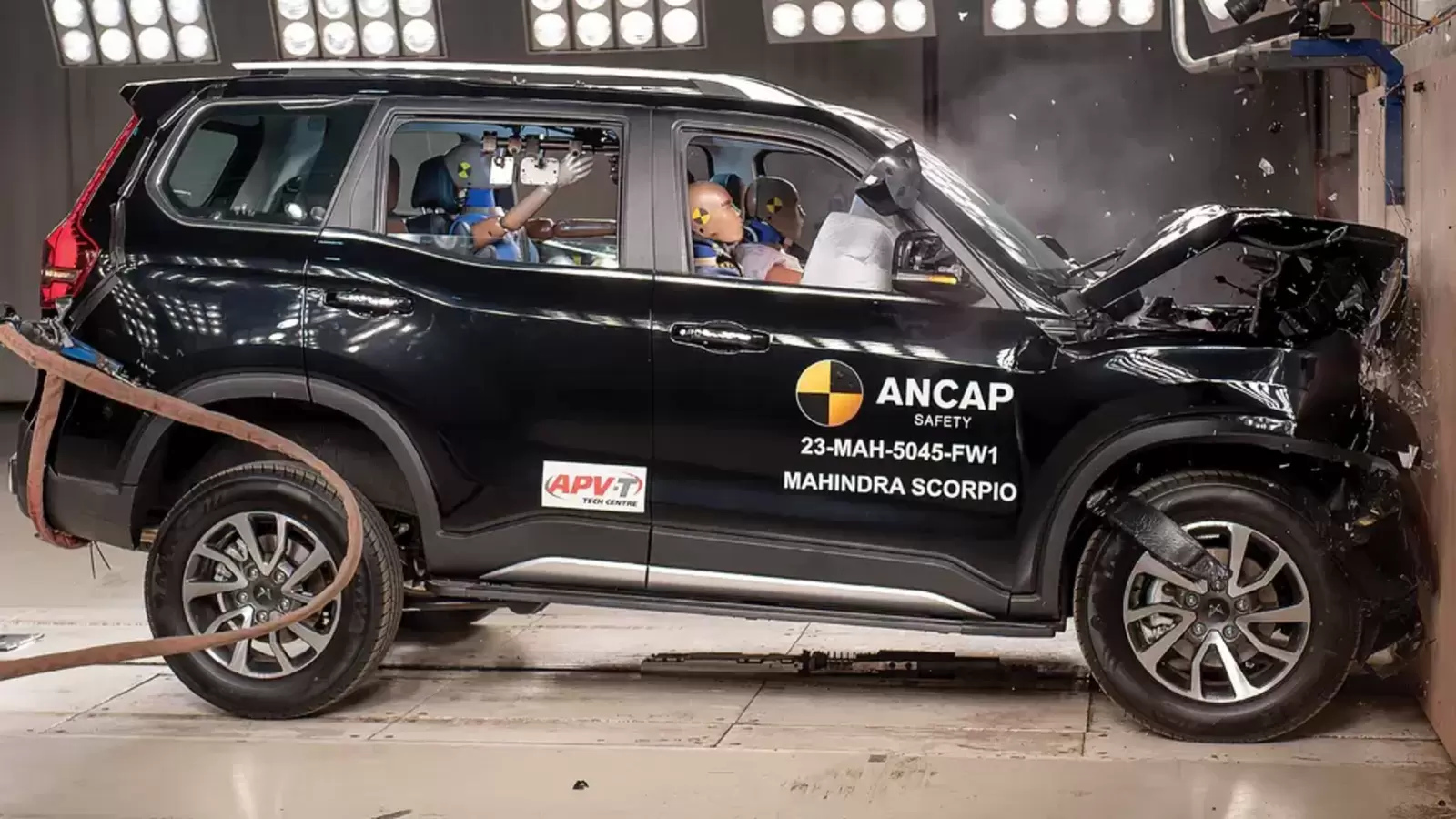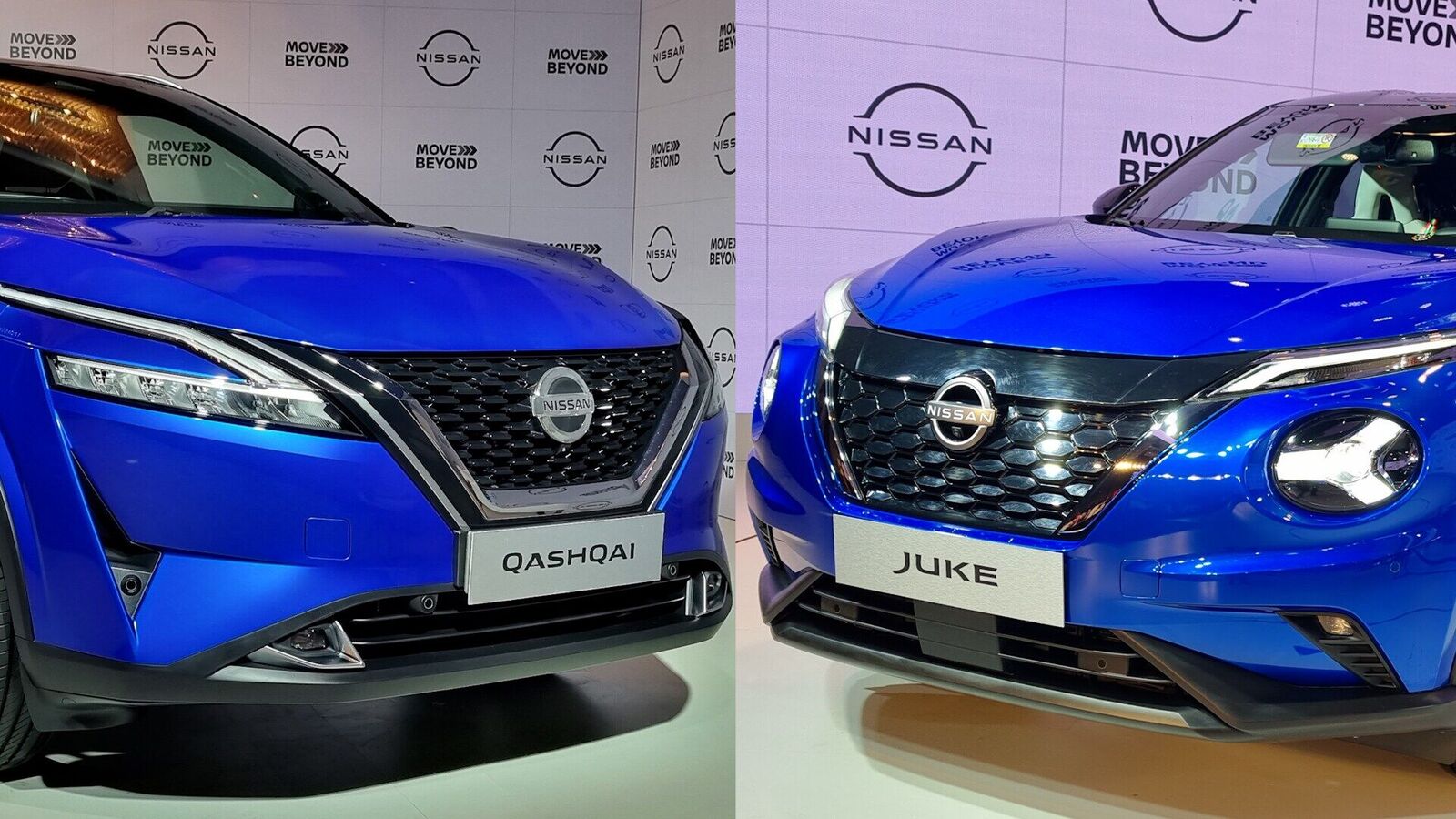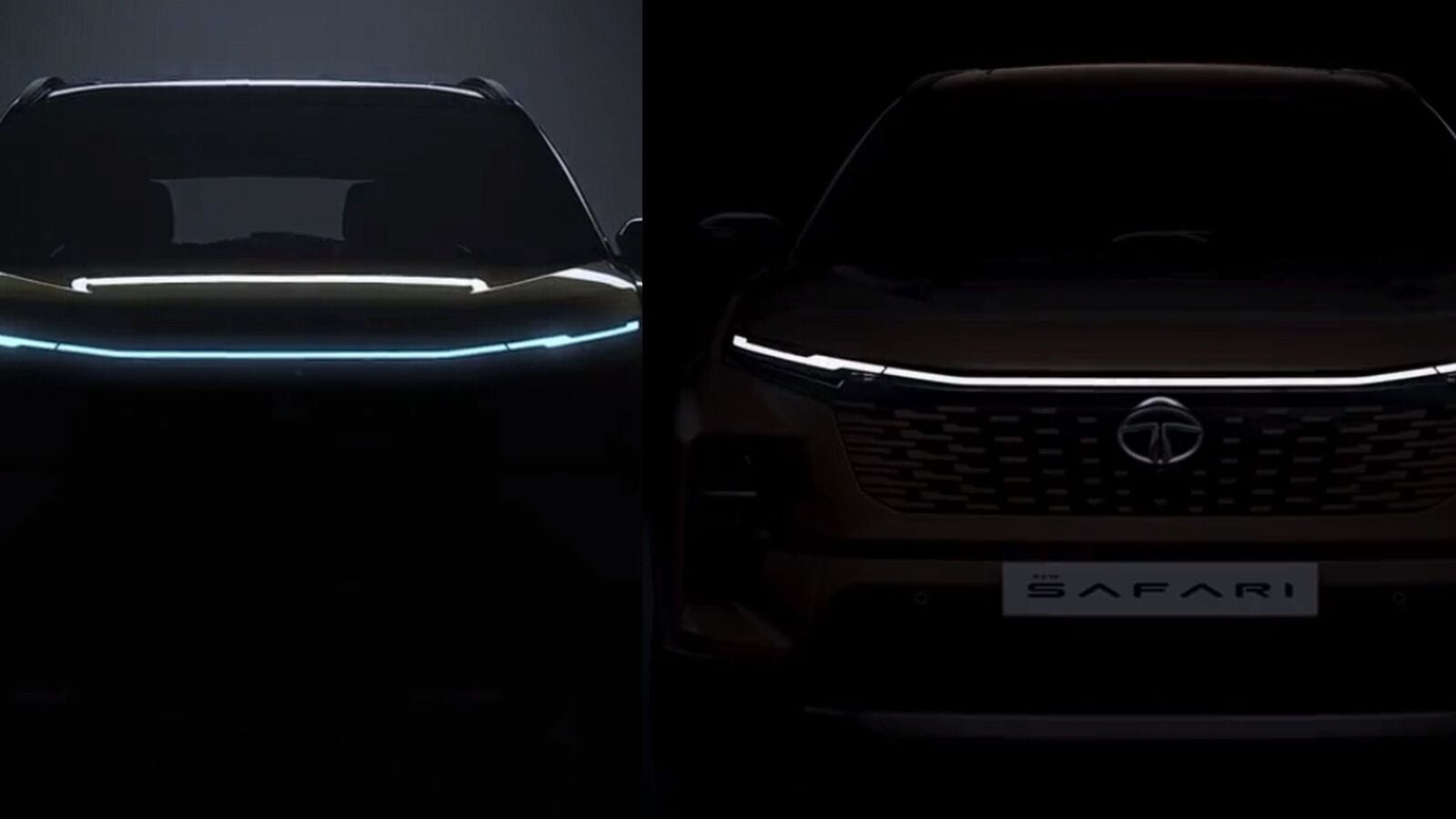A leaked design patent from Tata Motors has revealed the Terrain Mode that could debut in its upcoming SUV. The patent image shows a rotary knob with seven different terrain modes which include snow, road, gravel, mud and other modes. Tata Motors is expected to start offering all-wheel drive or four-wheel drive with its electric SUV from the Harrier EV.
India’s passenger vehicle industry to see less than 5% growth in FY25, says Tata
- Tata Motors’ key official Shailesh Chandra has hinted at impending price hikes for passenger vehicles in the coming months.
Despite the rapidly rising demand for personal mobility and SUV-mania across the country, India’s passenger vehicle segment is likely to see less than five per cent growth in the next financial year, forecasted Tata Motors. Tata Motors Passenger Vehicles Managing Director Shailesh Chandra stated that India’s domestic passenger vehicle industry is likely to see moderate to less growth in the next fiscal starting in April 2024. However, the Tata Motors official believes electric vehicle sales in the country will grow despite the slow pace of EV charging infrastructure development.
Passenger vehicles to see sluggish growth
Chandra said that in FY23, the industry witnessed 25 per cent growth in the passenger vehicle segment, which is expected to become moderate in this financial year to about eight per cent. The Tata Motors official said that the industry is currently witnessing a high base effect and in the next financial year, there will be be slightly challenging situation for the segment. This challenging situation would result in the industry recording less than a five per cent growth rate in the next financial year, claimed Chandra during an analyst call.
Watch: 2023 Tata Safari review: Family SUV with bachelor spirit?
Passenger vehicles likely to be pricier
In the last few months, automakers in India have announced price hikes for their respective passenger vehicle models citing increasing production costs due to factors such as surging raw material costs, inflation etc. Chandra hinted that there would be more such price hikes in the next financial year, which would pose challenges to the growth of passenger vehicles.
Citing various challenges for the growth of passenger vehicles in India, Chandra noted that while commodity prices have been stable in the past quarter or so, there is a risk that prices may go up going forward. He hinted that costs of crucial raw materials are going up, which may impact the prices of passenger vehicles negatively in the coming months.
Watch: 2023 Tata Nexon EV facelift first drive review: Best-seller gets even better?
Electric vehicles to continue growing
Tata Motors is spearheading the democratisation of electric vehicles in India’s passenger vehicles segment. The homegrown OEM is leading the Indian electric car segment with more than 80 per cent market share. In the last few years, the segment has witnessed rapid growth thanks to various factors such as rising costs of petrol and diesel, narrowing price gap between electric and fossil fuel vehicles, availability of various government subsidies and incentives for EVs, tightening emission norms, growing awareness about environmental pollution and vehicular emissions’ impact on that, the launch of new electric cars etc. Tata Motors believes this growth momentum will continue in the next financial year as well.
Chandra said that in 2023, while the overall passenger vehicle industry grew eight per cent on a year-on-year basis compared to 2022, electric vehicle sales surged by 95-100 per cent YoY compared to the previous year. “I think this trend is likely to continue. So companies with stronger portfolios in CNG and EVs will grow,” Chandra said.
Watch: Tata Altroz iCNG: First Drive Review
Interestingly, this growth projection comes despite the sluggish pace of growth for the electric vehicle charging infrastructure, which is considered a key factor for the growth of electric vehicle sales. “As far as EVs are concerned, I think the biggest challenge here is the pace at which the charging infra is growing. It is lagging behind the pace at which the EV adoption is happening,” Chandra noted further adding, “Given that the charging infra is crucial to the growth and expansion of EV market, we have gone for an open collaboration approach with all charge point operators as well as the oil marketing companies who are focusing on expansion of charging infra.”
First Published Date: 25 Feb 2024, 15:57 PM IST
Source link
Year Ender 2023: Cars for India that passed GNCAP crash test with flying colours
India’s automobile industry is constantly evolving. People’s demands keep changing and manufacturers try to ensure that they are fulfilling the demands. The latest push in the industry has come in the form of safe vehicles. People are now well aware of the safety rating of the vehicles. What has helped in pushing safe vehicles is Global NCAP’s #safercarsforindia initiative. As part of this campaign, every year several cars that are being sold in India are crash-tested. This year also several cars were crash-tested and here are five cars that passed GNCAP tests with flying colours in 2023.
Tata Safari and Harrier
Tata Motors was the first automobile manufacturer that really started the movement about safe cars in India with the Nexon. However, they took a long time to crash-test the Harrier and Safari. With the facelifts, the manufacturer finally sent the SUVs to Global NCAP for a crash test and they scored the highest rating in the crash test. Not only this, the Harrier and the Safari are also the first vehicles to be tested by Bharat NCAP. Both the SUVs are based on Land Rover’s Omegarc platform so it makes sense that both SUVs also share the same safety rating and features.
Hyundai Verna
Well, this came as a surprise to everyone. Hyundai Verna scored 5 stars in the Global NCAP crash test. It is the first made-in-India car from Hyundai to achieve five stars in the crash test. The new generation of Verna was launched in the Indian market this year and has been doing decent in terms of sales. The voluntary test for the Hyundai Verna was one of the last tests to be done by Global NCAP for India.
Also Read : Volkswagen to bring back physical buttons in new cars in era of touchscreen
Volkswagen Virtus and Skoda Slavia
Volkswagen Virtus and Skoda Slavia also scored 5 stars in the Global NCAP crash test. Both sedans come from the manufacturer’s India 2.0 strategy and are based on MQB-A0-IN. This is the same platform that is being used on the Volkswagen Taigun and Skoda Kushaq which also scored 5 stars in a crash test.
First Published Date: 22 Dec 2023, 17:26 PM IST
Source link
Tata Safari and Harrier receive first ever Bharat NCAP 5-star rating
Tata Motors has announced that its Safari and Harrier SUVs are the first vehicles to secure a 5-star rating in Bharat NCAP’s crash test. Both SUVs had also scored five stars in the Global NCAP crash test on which Bharat NCAP is based on. The Harrier and Safari were recently updated and received mechanical as well as cosmetic upgrades.
Tata Harrier and Safari received 30.08 points out of 32 in Adult Protection and 44.54 points out of 49 in Child Protection. The SUVs were fitted with seven airbags out of which six are offered as standard across all variants, Electronic Stability Control, three-point seatbelts in all rows, seatbelt reminders for all passengers, ISOFIX child seat mounts and seatbelts with retractor, pretensioner, load limiter and anchor pretensioner.
The Harrier is priced between ₹15.49 lakh and ₹26.44 lakh whereas the Safari starts at ₹16.19 lakh and goes up to ₹27.34 lakh. All prices are ex-showroom. Both SUVs use the same 2.0-litre diesel engine that is sourced from Fiat. It produces 168 bhp and 350 Nm. The gearbox on duty is a 6-speed manual unit or a 6-speed torque converter transmission.
Watch: Tata Harrier or Safari? Which one should you pick and why
Tata Motors has now found one more reason to underline the safety credentials of its vehicles. “Bharat-NCAP is a significant step forward as it provides customers with a credible, objective score to evaluate the safety aspects of various vehicles. Informed customers taking optimal decisions will further foster the rising preference for safer vehicles in the country,” said Shailesh Chandra, MD, Tata Motors Passenger Vehicles Ltd and Tata Passenger Electric Mobility Ltd. “We acknowledge and appreciate the collaborative efforts of the government, regulatory bodies, and the automotive industry in this pursuit. At Tata Motors, safety is at the core of our DNA and we are honoured to win this maiden Bharat-NCAP certification with an exemplary 5-star rating for two of our vehicles. We remain committed and will continue to work towards improving vehicle safety holistically.”
Also Read : Tata Nexon to Mahindra XUV700: How 5-star GNCAP safety ratings boosted these Indian cars’ sales performance
What is Bharat NCAP?
Bharat NCAP is a a star-rating system for crash testing cars that are available in Indian market specifically. As previously mentioned, it is based on the Global NCAP crash test system and will rate vehicles from zero to five, depending on the safety provided in case crashes. The test involves subjecting the test vehicle to crashes from multiple sides. Cars are voluntarily being sent by manufacturers and so far, the likes of Maruti Suzuki, Hyundai, Kia and of course, Tata Motors have sent a number of their respective models for the test.
On the result of Safari and Harrier, Nitin Gadkari, Union Minister for Road Transport and Highways, once again underlined the significance of Bharat NCAP. “Bharat NCAP is India’s independent, atmanirbhar voice on vehicle safety. It is benchmarked to the best-in-class global standards and the Bharat-NCAP vehicle rating system is designed to advance road safety and vehicle safety standards beyond mandatory regulations,” he said. ” I’m delighted that the first ever vehicles being certified today with the highest achievable 5-star rating, are both from Tata Motors. I congratulate them on award of this coveted certification with the highest possible ratings and for continuing to enrich their legacy of introducing the safest vehicles on Indian roads.”
First Published Date: 20 Dec 2023, 20:35 PM IST
Source link
Maruti eVX to Tata Harrier EV: Electric cars to launch in India next year
India will get a number of new electric cars in the next 12 months as the EV segment continues to grow at a rapid rate. Several carmakers have already confirmed launch of their new electric vehicles in 2024. Some of these models will help top carmakers enter the EV fray in the country which currently has less than seven per cent contribution to overall vehicle sales in India. Key names among the expected electric cars to hit Indian shores include the likes of Maruti Suzuki’s first EV – the eVX, Tata Harrier EV among others. Here is a quick look at list of brand new electric cars to launch in India next year.
Maruti Suzuki eVX
2024 will be a landmark year for Maruti Suzuki, the largest carmaker in India, as it plans to put its first ever electric car eVX to production. The carmaker has confirmed that the eVX electric SUV, first showcased at the Auto Expo held in January this year, will be manufactured from Suzuki Motor’s Gujarat facility at Hansalpur starting next year. It is expected to be launched some time in 2024. The eVX electric SUV will come with a range of around 550 kms in a single charge. It will be equipped with a 60 kWh lithium-ion battery pack. When launched, it will take on the likes of MG ZS EV and Hyundai Kona among others.
Tata Harrier EV
Tata Motors has confirmed that its flagship Harrier SUV, which recently received a major facelift, will get its electric version next year. The Harrier EV made its debut at the Auto Expo earlier this year. Built on the Gen 2 EV architecture, the Harrier EV will come with V2L and V2V charging facilities. The Harrier EV has been spotted testing on roads ahead of its launch within the next few months. However, very little is known about what this electric SUV will offer in terms of range, performance and features.
Tata Punch EV
The second electric vehicle from Tata stable expected to make India debut next year is the Punch. The smallest SUV from the carmaker already has the ICE and CNG version on sale. When launched, it will become the fourth car in Tata’s lineup to offer ICE, CNG and EV version of the same model. The Punch EV is expected to come with the same Ziptron technology that is doing duty in other Tata EVs like Nexon. The size of the battery could be the ones used for Tigor EV or the Nexon EV. Tata Punch EV could offer range of more than 300 kms in a single charge in the long-range version.
Tata Curvv EV
The third electric car from Tata Motors expected to be launched in 2024 is the Curvv EV. Tata is likely to launch the EV version of the SUV after its ICE version makes its debut. The Curvv EV will be based on Tata Motor’s X1 platform which will be heavily reworked to become EV ready. According to reports, the expected range of the Curvv electric SUV will be between 400 kms and 500 kms in a single charge. It is not clear if Tata Motors will use the same battery the Nexon EV facelift uses.
Kia EV9
The Korean auto giant is expected to expand its EV lineup in India with the introduction of its three-row electric SUV EV9. Based on the Electric Global Modular Platform (E-GMP), the EV9 stands more than five metres in length. It promises to offer range of up to 541 kms in a single charge. It is expected to be offered in two variants. Globally, the EV9 is powered by a 150 kW electric motor that can help it sprint 0-100 kmph in 9.4 seconds. The RWD version of the EV will come with a more powerful 160 kW electric motor. The EV has an 800-volt electrical architecture that enables the EV to charge at ultra-fast speed. Kia claims the EV9 can run 239 kms with just 15 minutes of charging.
Mahindra XUV.e8
Mahindra and Mahindra will also expand its EV lineup for India with the launch of an electric SUV based on the XUV700. This will be Mahindra’s second electric offering after the XUV400. Mahindra had showcased five upcoming electric SUVs during an event held in United Kingdom in August last year. To be launched under the Born Electric brand, the XUV.e8 is expected to come with dual electric motor as well as all-wheel drive technology. Mahindra is likely to offer at least 60 kWh battery pack with the XUV.e8 EV besides adding features like level 2 ADAS, 5G connectivity among others.
First Published Date: 18 Dec 2023, 14:20 PM IST
Source link
Why Scorpio-N flunked ANCAP crash tests? Mahindra reacts to new safety rating
Mahindra Scorpio-N owners are still trying to get their heads around the surprising crash test results the SUV came up with at the Australasian NCAP (ANCAP). The flagship SUV from the carmaker, which is also their best-selling model in India, scored zero rating at the ANCAP crash tests held recently. What has surprised many that the Scorpio-N returned with a five-star rating at the Global NCAP crash test held not so long ago. Now, Mahindra and Mahindra has officially come out with its explanation and its way forward to make Scorpio-N safer in the future.
The Mahindra Scorpio-N tested by ANCAP came laced with several safety features including six airbags, Electronic Stability Control, ABS and EBD, ISOFIX seats among others. But these features were not enough for the SUV to even score a single rating at the test. Sharing the results, the ANCAP explained that the Scorpio-N failed the test due to lack of features like autonomous emergency braking and lane support system. Both these features are usually available with ADAS pack, which Mahindra does not offer with this SUV. The ANCAP also took serious note that the model does not have seatbelt reminders for the second and third rows, speed limit information, driver monitoring system, child presence detection and that the second and third row seats do not offer enough protection for children.
Also Read : Bharat NCAP to start testing cars from December 15. Check out the expected models to go first
The Scorpio-N’s disappointing safety rating at the ANCAP has prompted Mahindra to announce that it will make necessary changes when the SUV undergoes mid-cycle update. The carmaker is now expected to offer ADAS in the SUV when the facelift arrives, a feature Mahindra offers only in the XUV700 SUV as of now. Reacting to the ANCAP safety rating, Mahindra and Mahindra issued a statement which read, “The ANCAP has specific requirements, which were updated on January 1, 2023, that include the mandate for certain safety features. We at Mahindra are committed to our promise of safety and are working towards meeting these unique safety regulations and requirements for Australia as part of our product mid-cycle update.”
Also watch: 2024 Kia Sonet facelift SUV: Safer, sportier and ready to challenge rivals
The Scorpio-N’s ANCAP safety rating shows how new car assessment program around the world can actually throw up different results for the same model. It is evident that, to be coined as one of the safest cars, one needs to have features highlighted by the agency in case of Scorpio-N. The result comes months after Scorpio-N became the first body-on-frame SUV to secure five-star rating at the Global NCAP crash tests under new safety protocols. It is one of the safest cars in India currently, placed right after Tata Harrier and Safari, Volkswagen Taigun and Skoda Kushaq.
Mahindra and Mahindra had launched the Scorpio-N SUV in Australia in April this year, as well as in New Zealand a few months later. Mahindra also sells models like Thar among others in the continent. ANCAP is the safety rating agency for all new cars launched in these two countries.
First Published Date: 15 Dec 2023, 09:37 AM IST
Source link
Punch EV to Harrier EV: Upcoming new Tata Motors cars you should wait for
Tata Motors is expected to drive in more electric vehicles besides other new models to India in coming days. The upcoming Tata cars, some of which will be launched in the next few months, also include CNG and ICE models too. While Tata Motors has confirmed launch of at least three of these models by next year, the other models have already been showcased in either production version or in concept avatars recently by the carmaker.
Tata Motors is currently the leading carmaker in India in the electric vehicle segment. It offers models like Nexon EV, Tiago EV and Tigor EV. Tata also has two of India’s best-selling SUVs in Nexon and Punch. The carmaker recently launched the facelift version of the Harrier and Safari SUVs. Besides EVs and ICE vehicles, Tata also offers a few CNG models including the Tigor, Tiago, Punch and Altroz. The carmaker will expand all these portfolios with new models in coming days.
Here is a look at some of the new and upcoming cars from Tata Motors stable worth waiting for.
Punch is the smallest SUV in Tata Motors’ lineup in India. The rival to Hyundai Exter, Punch is available in both petrol and diesel versions along with CNG kit too. In August this year, Tata Motors confirmed that it will launch four electric vehicles by early 2024. These upcoming electric vehicles also include the Punch EV, which has already been spotted a number of times during test runs. According to reports, the Punch EV will use the same Ziptron technology that is doing duty on the Nexon EV. The size of the battery could be the ones used for Tigor EV or the Nexon EV. Tata Punch EV could offer range of more than 300 kms in a single charge in the long-range version.
Tata Motors showcased the Curvv Concept model in 2022 highlighting how its design language will change for upcoming models. A year later, the carmaker is preparing to launch Curvv in the production form. Tata had showcased the ICE version of the Curvv at the Auto Expo held earlier this year. Sailesh Chandra, MD at Tata Motors, had confirmed that the Curvv ICE version will be launched in India ahead of its EV avatar by 2024. With either 1.2-litre and 1.5-litre petrol engines under its hood, the Curvv SUV is expected to take on the likes of Hyundai Creta, Kia Seltos, Maruti Suzuki Grand Vitara among others in the compact segment.
Tata Curvv EV
Showcased first as an electric concept, the Curvv SUV is likely to see its EV version launching in India after the ICE version. The Curvv EV will be based on Tata Motor’s X1 platform which will be heavily reworked to become EV ready. According to reports, the expected range of the Curvv electric SUV will be between 400 kms and 500 kms in a single charge. It is not clear if Tata Motors will use the same battery the Nexon EV facelift uses.
Tata Harrier EV
Tata Motors unveiled the Harrier EV at Auto Expo 2023 earlier this year. The carmaker has confirmed that the EV version of Tata’s flagship SUV will go on sale in 2024. It has been spotted testing on roads ahead of its launch within the next few months. Built on the Gen 2 EV architecture, the Harrier EV will come with V2L and V2V charging facilities. As far as design is concerned, the unit showcased by the carmaker at the Auto Expo is slightly different from the Harrier facelift SUV launched in October. Tata Motors has not revealed much about the powertrain and its specifications yet.
Tata Altroz EV
Showcased at the Auto Expo 2020 in concept form, Tata Altroz EV is one of India’s most awaited electric cars. This would be the second hatchback from the carmaker after the Tiago to get an electric version. The Tata Altroz EV is expected to draw power from the automaker’s Ziptron powertrain, which would comprise a permanent magnet AC motor channelling energy to the front wheels via a single-speed transmission. Expect the Altroz EV’s lithium-ion battery pack to offer a range of around 300 kms in a single charge, which could come with fast charging capability.
The Altroz premium hatchback is also expected to get its most powerful variant in the Racer version, which was showcased at the Auto Expo 2023. The sporty-looking version of the hatchback, complete with a dual-tone theme of red and black with white stripes, could be Tata’s answer to the likes if Hyundai i20 N Line. The Altroz Racer is powered by a 1.2-litre turbocharged petrol engine. It produces 120 bhp and 170 Nm of peak torque. These power outputs are more than the Altroz iTurbo. Also, the gearbox has been upgraded, the Altroz Racer gets a 6-speed unit instead of a 5-speed unit.
Tata Nexon CNG
The Nexon SUV, Tata Motors’ best-selling car in India, is currently offered with petrol, diesel and electric versions. However, the carmaker could complete Nexon’s family with the introduction of its twin-cylinder iCNG technology too. The carmaker recently launched the CNG version of Punch SUV. There are talks that Tata Motors is also planning to use the same technology in Nexon too. The sub-compact SUV’s key rival Maruti Suzuki Brezza is the only model in the segment which is offered with CNG technology.
The much-awaited Sierra SUV from Tata Motors was first showcased back in 2020 during Auto Expo. In the 2023 edition of the auto show, Tata Motors returned with an EV concept version of the SUV. Tata Motors has confirmed that the Sierra EV will be launched in India by 2025.
First Published Date: 30 Nov 2023, 14:15 PM IST
Source link
Nissan Qashqai and Juke EVs to be manufactured in UK, say reports
Japanese auto giant Nissan Motor is likely to manufacture the electric versions of its two India-bound models Qashqai and Juke in United Kingdom. According to reports by British broadcaster Sky News, the Japanese carmaker will announce the development tomorrow, November 24. It is expected that these two models will be made at the carmaker’s UK plant located in Sunderland. Both these models were showcased in India last year in their ICE avatar along with the new generation X-Trail SUV. Qashqai and Juke are expected to hit Indian roads soon.
Rishi Sunak, Prime Minister of UK, is expected to visit Nissan Motor’s facility in northern part of the country on Friday. He is expected to be present when the announcement will be made by Makoto Uchida, CEO at Nissan Motor. Earlier in September, Nissan Motor had confirmed that two of its upcoming electric vehicles will be manufactured at its UK facility. According to reports cited by news agency Reuters, Nissan Motor is likely to invest $1.25 billion in UK to manufacture new electric vehicles. However, the carmaker is yet to confirm which two models will be manufactured there.
Nissan Motor showcased the ICE and hybrid versions of the Qashqai and Juke in India in October last year. The Juke is smaller in size compared to Qashqai, and could rival the likes of Creta and Seltos when launched in India. Qashqai could aim at the popularity of Harrier and others. The carmaker is currently testing the road feasibility of these models. The Qashqai has already been spotted on Indian roads during test runs.
Also watch: Top highlights of the Nissan Qashqai showcased in India
Nissan offers the Qashqai SUV with petrol engine mated to a hybrid system. The 1.3-litre turbocharged engine can generate up to 140 bhp of power and 156 Nm of peak torque. The transmission job is handled by Nissan’s Xtronic CVT gearbox. Nissan also offers a 1.5-litre unit mated to an ePower gearbox with Qashqai. This engine is capable of generating 156 bhp of power. Nissan Juke comes with a 1.00-litre petrol engine, mated to either a 6-speed manual or a 7-speed DCT gearbox. The engine can generate 115 bhp of power and up to 200 Nm of peak torque.
First Published Date: 23 Nov 2023, 13:50 PM IST
Source link
Updated Tata Safari and Harrier SUVs to launch on October 17
Tata Motors on Thursday announced that the company will officially launch the updated versions of the Safari and Harrier SUVs in the market on October 17. Bookings for both Tata Safari and Harrier had been opened just last week.
Both Tata Safari and Harrier are now promising some very significant updates to the styling on the outside while also sporting a number of updates in the cabin and crucial feature updates as well. While the Safari is a three-row vehicle that is positioned more as a family vehicle, the Harrier once again targets a younger-SUV-buying audience.
The Indian car market is being powered by a sustained demand for SUVs and in this space, Tata Motors has managed to create a solid mark with both the Safari and Harrier. While only offered with a diesel engine option which means those interested in a petrol motor remain sidelined, the sales figures of both vehicles remain a firm indication of the respective popularity.
While Harrier was first launched in the market back in 2019 and Tata Motors has since sold over one lakh units of the model, the Safari was introduced in 2021 and approximately 46,000 units has been sold thus far.
What’s new in the updated Tata Safari?
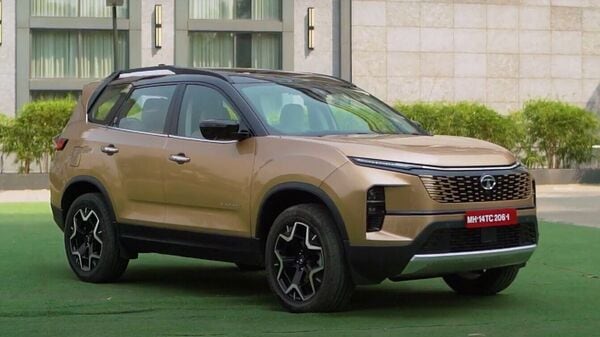
The facelift Tata Safari has a completely reworked front face which is highlighted by a new grille and updated casing for the head lights and fog lights. Stretching across the nose is an elongated DRL light bar which comes with ‘Welcome’ and ‘Goodbye’ signature illumination. The stretched light bar also makes its way to the rear of the SUV while the alloy design has been updated as well. In the cabin, the Tata Safari gets a new 12.3-inch infotainment screen with JBL Sound Modes, a 10-inch all-digital driver display, support for Amazon Alexa and Google Home – apart from native Tata voice command integration, dual-zone climate control, mood lighting, air purification system, panoramic sunroof, wireless phone charging, and more.
What’s new in the updated Tata Harrier?
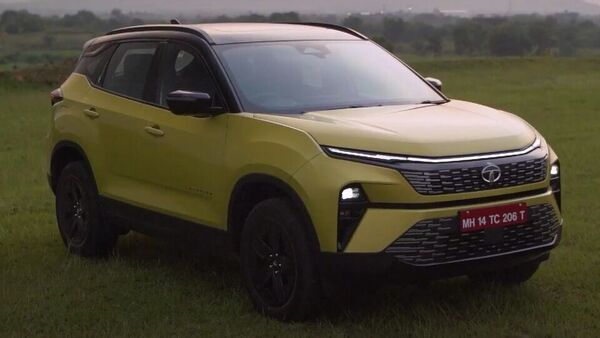
The facelift Harrier also sports a much fresher look and is now claiming to be sportier rather than all-out muscular. It gets an updated grille on the face and the an updated vertical housing for the head lights and fog lights. It too sports the same stretched DRL bar on the face as the Safari, and the same stretched tail light LED bar. The alloy design has been changed too. In the cabin, the feature list is similar to what is also offered on the updated Safari.
Tata Safari and Tata Harrier: Key specifications
Tata Motors has not brought any changes to the mechanics of both Safari and Harrier. The capable 2.0-litre diesel motor continues to do duty and is paired with both automatic and six-speed manual stick.
First Published Date: 12 Oct 2023, 11:37 AM IST
Source link
Tata Motors opens bookings for Harrier and Safari facelift SUVs
Tata Motors has opened the bookings for the 2023 Harrier and Safari facelift SUVs today. The carmaker will launch both these flagship SUVs in October. One can book the Harrier facelift SUV or the 2023 Safari SUV for an amount of ₹25,000 through Tata’s online portal or at nearest dealership. The deliveries are expected to start soon after Tata Motors announces the prices. While Harrier will renew its rivalry with the likes of Hyundai Creta, Kia Seltos among others, the Safari will lock horns with Mahindra XUV700 in the three-row SUV space.
Tata Motors has teased both Harrier and Safari facelift SUVs on its social media handles in the run-up to the launch. Both models have undergone several changes, including design, features and powertrain. Here is a look at what all has changed.
Tata Motors will offer the Harrier facelift SUV in four trims. Like the new Nexon and Nexon EV, Tata has dropped the old nomenclature to identify the model variants. The carmaker will use Smart, Pure, Adventure and Fearless names for Harrier variants too. For Safari, the top-end variant is called Accomplished.
Tata Harrier, Safari facelift: Design updates
The Harrier and Safari facelift SUVs will come with a new front face. Among the key changes are an updated grille flanked by vertically split headlight setup and LED DRLs stretched across the bonnet. The main headlamp housing is new and is now positioned vertically. At the sides, the Harrier SUV will sit on a set of redesigned alloy wheels measuring between 17 inches and 19 inches. At the rear, the Harrier gets connected light bar feature that Safari facelift has also received.
Tata Harrier, Safari facelift: Interior and features
On the inside, the 2023 Harrier will offer a new 12.30-inch infotainment screen and a 10.25-inch digital instrument cluster which look similar to the ones introduced in 2023 Nexon and Nexon EV. The dashboard will come with ambient lighting promising a more youthful vibe inside the cabin of the new Harrier. The new Harrier will also come with the new two-spoke steering wheel with a backlit panel showing Tata Motors’ logo and mounted controls that made its debut inside the Nexon and Nexon EV facelift SUVs.
Among other features, the Harrier facelift SUV will also offer powered tailgates, 10 JBL speaker sound system with Harmon AudioworX, paddle shifters, 360 degree camera and more.
Tata Harrier, Safari facelift: Safety features
In terms of safety, Tata Motors will offer as many as seven airbags in Harrier and Safari. Six airbags will be offered as standard across all variants. The seventh airbag, which is meant to protect the knees of the driver, will be offered in top-spec variants. Tata will also offer level-2 ADAS technology in Harrier, as well as the new Safari, with at least 11 safety features.
Tata Harrier, Safari facelift: Engine
The new Harrier and Safari SUVs will continue to be offered with Tata Motor’s trusted 2.0-litre diesel engine only. Mated to either a 6-speed automatic or a 6-speed manual transmission options, the engine is capable of generating 167.6 bhp of power and 350 Nm of peak torque. It also offers three drive modes which include Eco, City and Sport. Besides these, Tata will also offer three traction modes – Normal, Rough and Wet.
First Published Date: 06 Oct 2023, 16:44 PM IST
Source link
Tata Harrier and Safari facelift teased officially, bookings to open on 6th Oct
Tata Motors has officially teased the facelifted version of the Harrier and Safari for the very first time. The manufacturer will start accepting bookings of the Harrier and Safari facelift on 6th October. The updated SUVs will come with a revamped design language that will look like Curvv. The interiors will also be updated and there is a possibility that Tata might also introduce the petrol engine finally.
Tata will continue to sell the Harrier and Safari with a Fiat-sourced 2.0-litre diesel engine that produces 168 bhp and 350 Nm of peak torque. It comes mated to a 6-speed manual gearbox or a 6-speed torque converter automatic transmission. There is a possibility that Tata will also introduce its new 1.5-litre petrol engine that uses direct-injection technology. It puts out 168 bhp and 280 Nm of peak torque.
The updated design language means that up-front there will be a split headlamp setup with the LED Daytime Running Lamp connected via a light bar. The main headlamp housing is new and is now positioned vertically. The grille on the Safari does look more up-market than the one found on the Harrier. It will probably be a big distinguishing factor between both the SUVs. On the sides, there will be a new set of alloy wheels. At the rear, it is expected that Tata will carry the same tail lamp setup but now there will be a connected lightbar.
Also Read : Tata Motors reveals new petrol engines for Harrier, Safari and Curvv SUVs
The interior will also get a new steering wheel that has a digital Tata logo. There is a possibility that the manufacturer will bring in the new infotainment system and the digital instrument cluster from the Nexon to the Harrier and Safari. The HVAC controls will also be updated that debuted on the Nexon. Apart from this, the dashboard can be redesigned as well.
First Published Date: 03 Oct 2023, 18:17 PM IST
Source link

